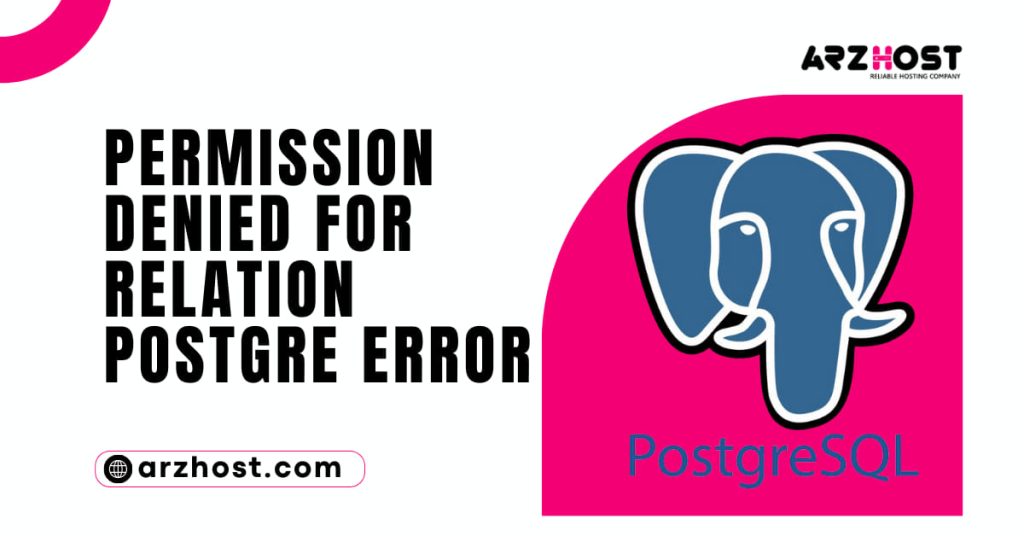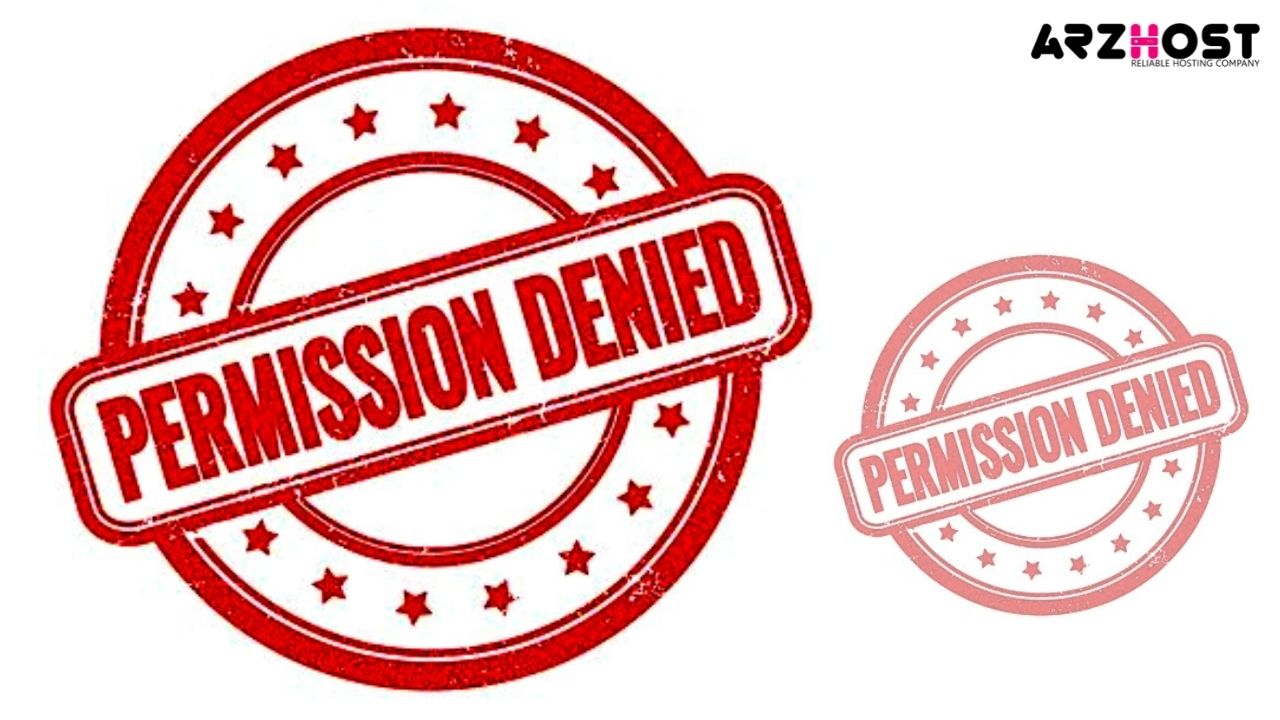Postgres informational indexes can manage complex site works with practically no issue. However, envision a situation where you get an approval denied error for informational index Postgres, bewildering right.
This site error happens due to the shortfall of informational index benefits like CONNECT, CREATE, etc. Around here at ARZHOST, we as often as possible get sales to fix the approval held error as part back from getting our Server Management Services.
Today, “Permission Denied for Relation Postgre Error”, what about we look at this mix-up comprehensively and see how our Hosting Expert Planners fix it for our customers.
How to fix Permission denied for database Postgres?
Postgres is an astonishing database that surfaces with huge components to help engineers. Regardless, it as often as possible shows up approval denied error. Observing the particular defense for this screw-up can be extremely interesting.
The middle avocation for the approval denied error in Postgres is the shortfall of a couple of benefits. “Permission Denied for Relation Postgre Error”, As of now, what about we see the essential driver of this mistake and its singular fixes.
1. Missing CONNECT advantage
Lately, one of our customers advanced toward us with an assent denied error in the Postgres. He tried to sign in to his database using SQL requests,
psql user dB customer - - secret expression
Here, user dB and customer are the informational index name and username independently. In any case, right after entering the mysterious expression, he got the going with error,
psql: FATAL: approval denied for informational collection "user dB"DETAIL: User doesn't have CONNECT advantage.
“Permission Denied for Relation Postgre Error”, Our Hosting Expert Planners checked and found a slip-up with CONNECT advantage. Regularly, the CONNECT advantage allows the customer to interface with a database. What’s more, we truly see this benefit at the connection startup. Accordingly, to permit CONNECT advantage, we followed the request.
Grant CONNECT ON DATABASE user dB TO customer;
This settled the screw-up enough.
2. Grant benefits to another customer
Once in a while, the customer’s effort to yield all benefits of an information collection to another Postgres customer other than the owner. “Permission Denied for Relation Postgre Error”, For that, we use the request,
Grant ALL PRIVILEGES ON DATABASE user dB TO new user;
However, when we sign in as the new customer and effort to examine data from the table, it ends up showing the mix-up,
Screw up: assent denied for association table name
This is because GRANT ALL PRIVILEGES ON DATABASE grants CREATE, CONNECT, and TEMPORARY benefits on an informational index to a customer. Anyway, none of these benefits permit the customer to examine data from the table.
Along these lines, “Permission Denied for Relation Postgre Error”, requires the SELECT benefit. We settle this approval denied error using the request.
Grant ALL PRIVILEGES ON ALL TABLES IN SCHEMA public TO new user;
The new user was then prepared to scrutinize data from the table. Similarly, we can moreover resolve the approval denied error by setting DEFAULT benefits to the customer. Here, we use the ALTER DEFAULT PRIVILEGES request to describe the default access benefits.
Alter DEFAULT PRIVILEGES IN SCHEMA public GRANT ALL ON TABLES TO new user;
This will be expressed in the piece shown in the request. “Permission Denied for Relation Postgre Error”, Also, to apply it to the entire database, we use the request,
Alter DEFAULT PRIVILEGES GRANT ALL ON TABLES TO new user;
3. Missing Postgres customer
In the control board-based servers, assent denied screw up can happen as a result of missing customers too. For instance, in control sheets like Plesk, if the mysterious key for PostgreSQL customer Postgres doesn’t relate to secret expression in the Plesk informational collection, it shows up errors.
Thusly, to fix it, “Permission Denied for Relation Postgre Error”, we update the PostgreSQL customer with the real mystery key and sync it with the Plesk DB. What’s more certify it from Plesk board at:
Conclusion
To lay it out simply, the approval denied for database Postgres happens in light of the shortfall of obvious benefits like CONNECT, CREATE, DEFAULT, and so on in the present write-up. “Permission Denied for Relation Postgre Error”, we analyzed how our Hosting Expert Planners fix Postgres benefits for our customers.
People Also Ask
question # 1: How do I fix Postgres permission denied?
Answer: The easiest choice is to change the document area to one of the server approaches. Assuming Postgres is on your PC, and you’re running Windows, for instance, move the record you’re attempting to peruse briefly to ‘C:\Users\Public’ or work your document out to this catalog.
Question # 2: How do I change permissions in PostgreSQL?
Answer: The fundamental arrangement of ALTER USER incorporates the name of the client (or ROLE ) followed by a progression of choices to illuminate PostgreSQL which tolerant modifications to make: =# ALTER USER role_specification WITH OPTION1 OPTION2 OPTION3; These choices range from CREATEDB, CREATEROLE, CREATE USER, and even SUPERUSER .
Question # 3: What is schema in PostgreSQL?
Answer: A PostgreSQL database cluster contains one or more named databases. Schemas also contain other kinds of named objects, including data types, functions, and operators. The same object name can be used in different schemas without conflict; for example, both schema1 and myschema can contain tables named mytable.
Question # 4: What is the password for Postgres users?
Answer: ident validation utilizes the working framework’s ID server running at TCP port 113 to confirm the client’s qualifications. peer validation then again is utilized for nearby associations and confirms that the signed-in username of the working framework matches the username for the Postgres data set.
Question # 5: Does Postgres have float?
Answer: PostgreSQL additionally upholds the SQL-standard documentations float and float( p ) for indicating inaccurate numeric sorts. Here, p determines the base satisfactory accuracy in double digits. PostgreSQL acknowledges float(1) to float(24) as choosing the genuine kind, while float(25) to float(53) selects twofold accuracy.










